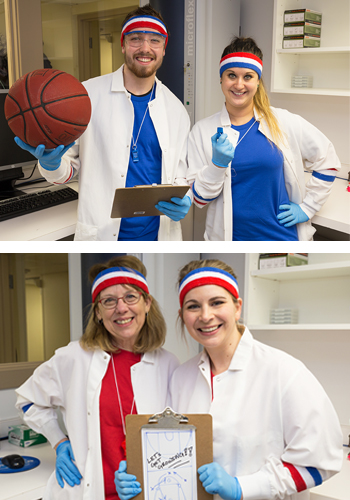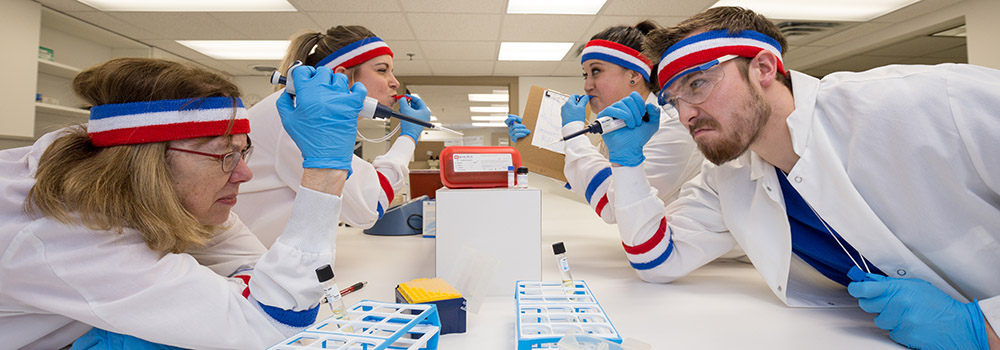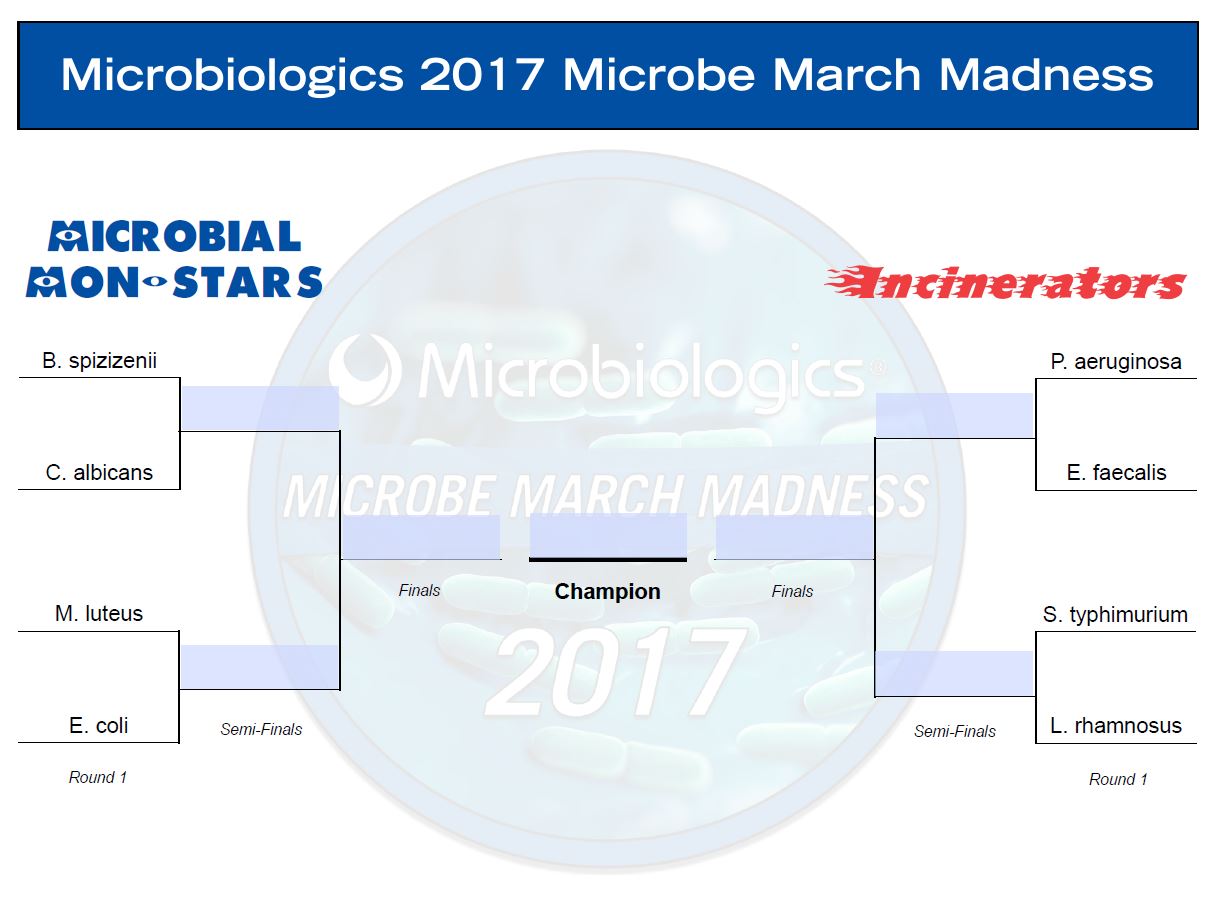The NCAA March Madness tournament has captivated basketball fans in the United States since the 1930s. Each year millions of fans have the opportunity to take part in this historical sporting event by filling out a bracket and choosing who they think will win the tournament. Determining the champion out of 68 teams requires a deep understanding of NCAA basketball and a lot of luck.
The anticipation of the upcoming NCAA March Madness tournament sparked an idea – basketball is great, but microbiology can be just as thrilling! What would happen if eight strains were pitted against each other in a series of tests designed to eliminate the weak?
The image of a microbial fight to the death inspired us to make the competition a reality. We are excited to announce 2017 will mark the first year of the annual Microbiologics Microbe March Madness Tournament!
Eight Strains Vying for the Title of Champion
Here’s how Microbial March Madness works:

Microbial Mon-Stars (above); Incinerators (below)
Two teams of four strains will compete in three rounds of tests aimed at determining which strain is the ultimate survivor. The tests will be performed by the Microbiologics team coaches using our EZ-Accu Shot product line (delivering 10-100 CFU per 0.1 ml aliquot), and all strains will be identified using the Bruker Microflex MALDI-TOF System. The tournament is single-elimination, and the final round will include only one strain from each team.
Team 1: Microbial Mon-Stars
- B. spizizneii
- C. albicans
- M. luteus
- E. coli
- Coaches: Amanda Y. (Proficiency Manager) and Tanner R. (Industrial QC Tech)
Team 2: Incinerators
- P. aeruginosa
- E. faecalis
- S. typhimurium
- L. rhamnosus
- Coaches: Kali S. (Technical Support Specialist) and Laurie K. (Technical Marketing Specialist)
The Competition
Round 1: Try-Outs
Each strain’s ability to survive in a mixed culture will be tested by applying the theory of competitive inhibition. Two results are possible:
- One strain will out-compete the other for nutrients resulting in a higher concentration of one microorganism than the other.
- One strain will be suppressed entirely and will not grow.
The strains that come out swinging and show the most growth will move on to Round 2.
Round 2: Conditioning (Semi-Finals)
The final four strains will be subjected to anaerobic atmospheres:
- 10-100 CFU/0.1ml of each strain will be inoculated on to TSA in duplicate for each atmosphere:
- 2x TSA aerobically
- 2x TSA anaerobically
- The counts will be averaged and the recovery percentage calculated compared to the aerobic TSA counts. The two winners will have higher percent recovery than their competitors.
Round 3: Finals – Who will crack under the spotlight?
The final round will test the last two strains’ will to survival against four different lengths of UV light exposure (365mn):
- 0 minutes (control)
- 5 minutes
- 15 minutes
- 30 minutes
10-100 CFU/0.1ml will be plated onto TSA and incubated at 35-37°C for 24 hours. One plate of each strain will be exposed per time interval. The strain that best survives under the UV light will be name the 2017 Microbe March Madness champion.
How to Play
- Determine which strain will win by downloading and filling out the Microbe March Madness 2017 Tournament Bracket.
- Submit your winning strain by filling out the form below. All submissions must be received by Tuesday, March 14, 2017. Everyone who selects the winning strain will receive a stuffed Stanley Staphylococcus and be entered into a drawing for a swag bag packed with Microbiologics gear.
- Follow us on Facebook, LinkedIn and Twitter to see the results starting with Round 1 on Wednesday, March 15. Use #MicrobeMarchMadness to follow the competition and share your bracket. The champion will be announced on Thursday, March 30.







Go for the win……. L. rhamnosus!!!
Fight fight fight Survive!
E. COLI! DO OR DIE!
I have a perfect bracket thus far. Too bad I missed the deadline.